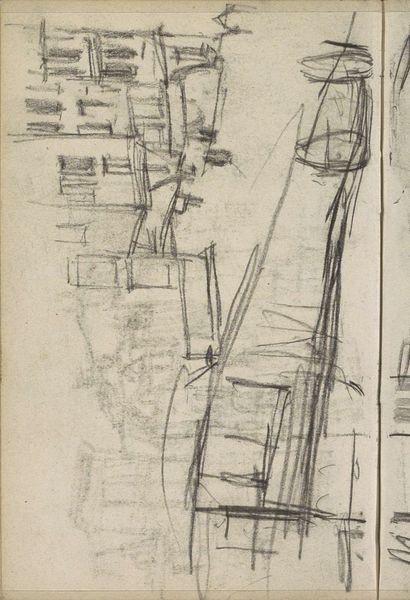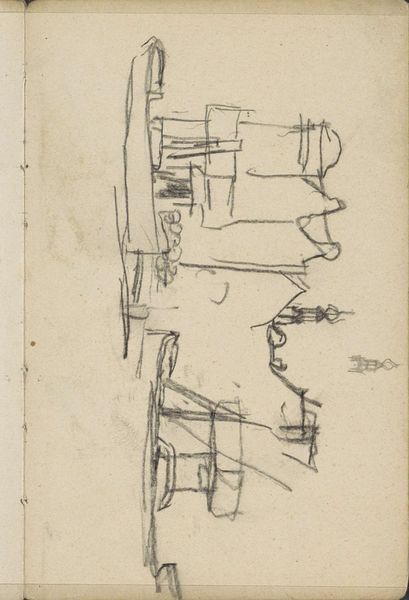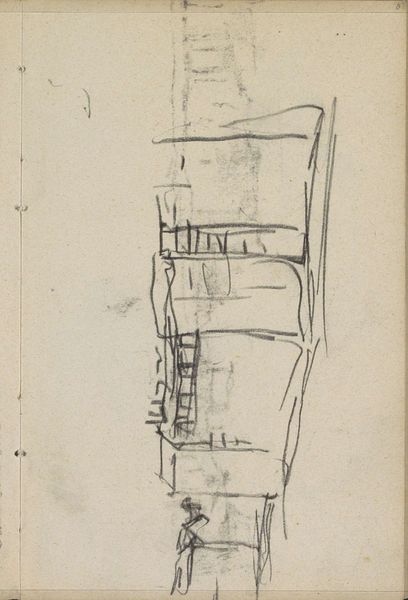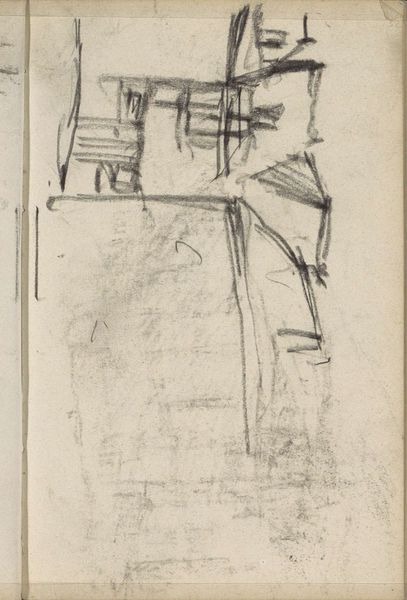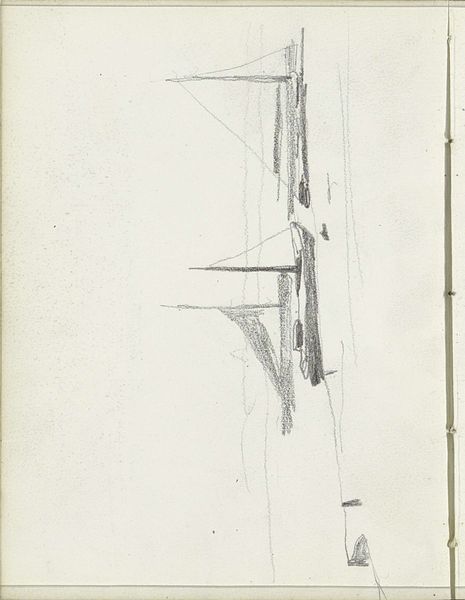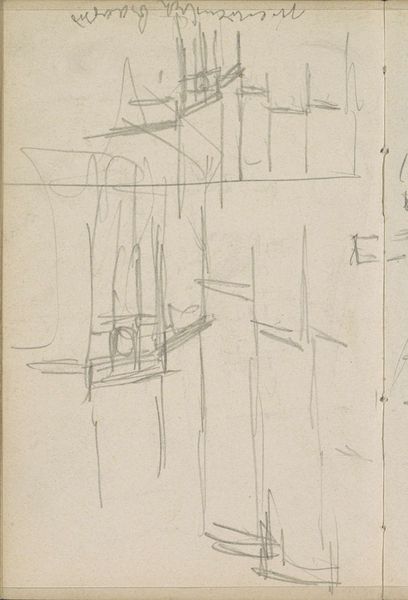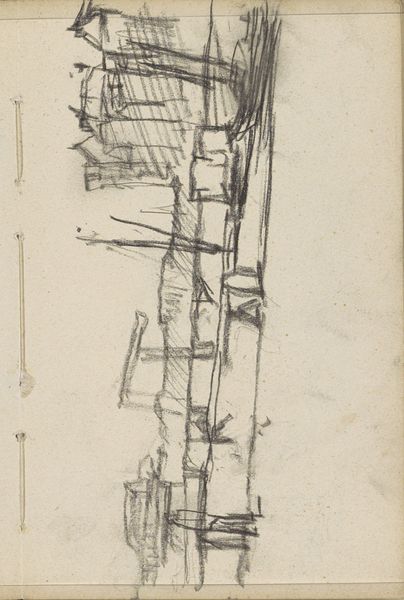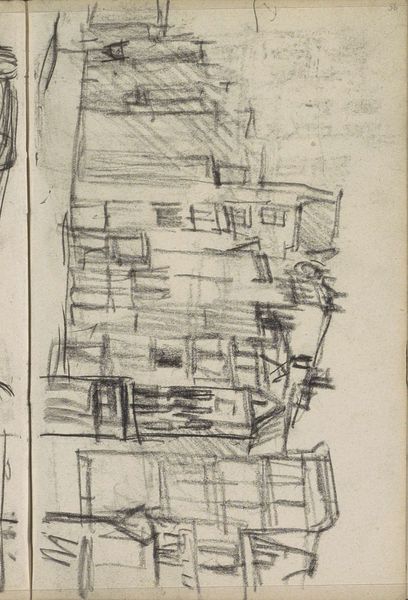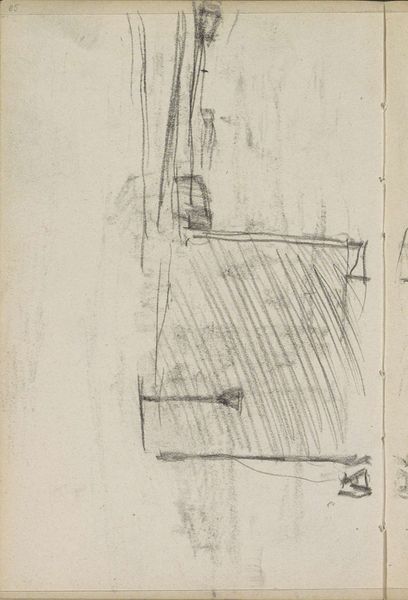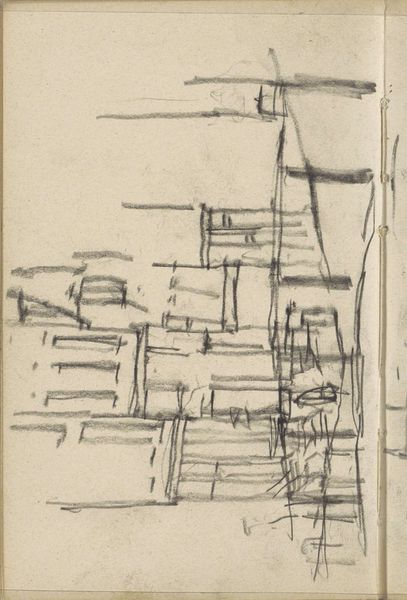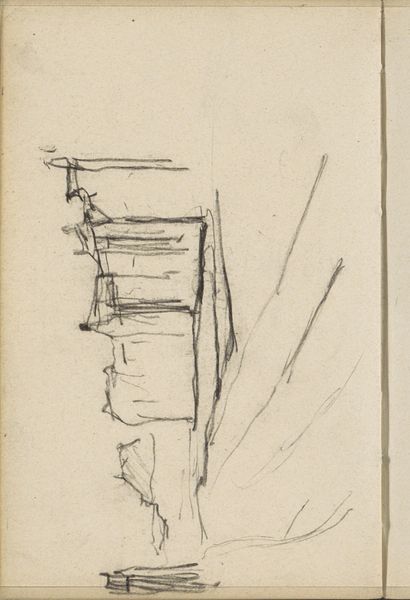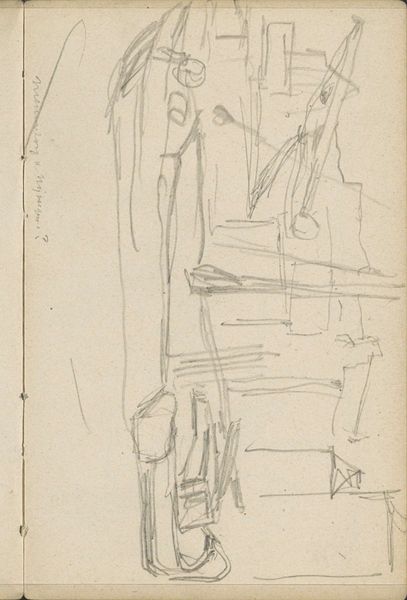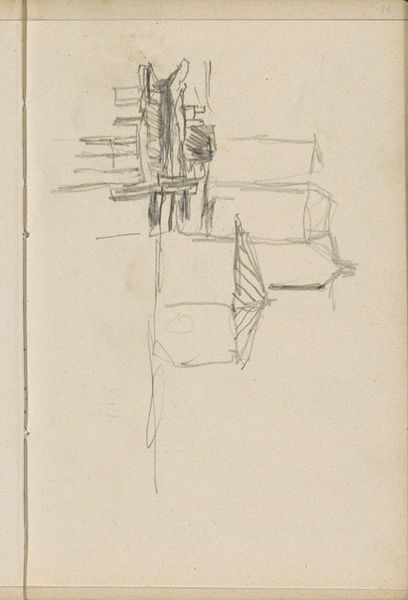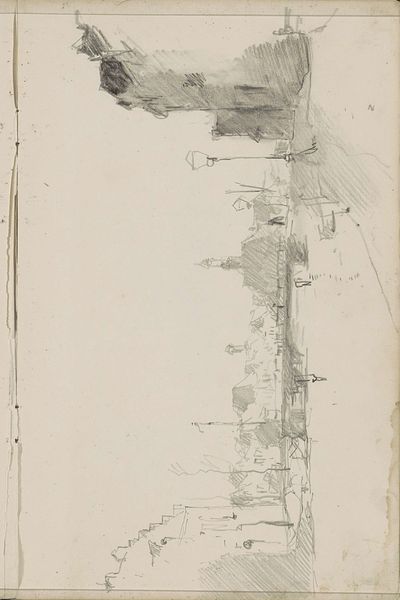
drawing, pencil, architecture
#
drawing
#
geometric
#
pencil
#
architecture
Copyright: Rijks Museum: Open Domain
Curator: Looking at this pencil drawing titled "Studie, mogelijk aan architectuurstudie," created by George Hendrik Breitner between 1886 and 1923 and currently held at the Rijksmuseum, my first thought is how provisional it feels, like a fleeting idea captured quickly on paper. Editor: Fleeting is the word. It's almost ghostly in its sparseness. I wonder, how does this relatively undefined study speak to the evolving role of architectural sketches within artistic circles of that time? Were these quickly rendered works viewed as marketable commodities like the portraits being done? Curator: That's fascinating. Considering Breitner's broader artistic practice, rooted in observation of urban life, perhaps this drawing reveals something about the accessibility and production of architectural sketches. The roughness of the graphite on paper speaks to a kind of artistic labor and intent behind mass reproduction or personal exploration that doesn't necessarily fetishize perfect replications, but documents lived environments in time and as experienced personally. The way Breitner captures form and structure seems less about precise representation and more about... documenting its place or the effect of its being in that space. Editor: Yes, the drawing as a record of encountering a place rather than meticulously planning one. But doesn't that immediacy complicate our understanding of who has access to architecture in the first place? Are these quick drawings made more for an individual purpose? Would the institutional culture even allow architectural forms and shapes to be rendered with this raw, immediate quality in public spaces? Curator: Precisely! And think about the role of drawing instruction in art education at that time. What are the politics implicit when a certain rapid style becomes the tool for recording personal interpretation in spaces often only experienced or even inhabited through wealth and status? This almost challenges the traditional modes and conventions associated with architectural visualization. Editor: So it might even signal resistance through material and style? This drawing could subtly hint at the tensions between rapid industrial and architectural expansion, on one hand, and those trying to document it personally through their own vision as quickly as possible to document it at all? Curator: Absolutely. I now see this not as simply a study of form, but as a document of encountering social and artistic transformations. Editor: An invitation to reimagine who can be involved in envisioning public structures in place or imagined? Perhaps sketching offered access to architectural conversation that one couldn't be given within certain rigid social strata.
Comments
No comments
Be the first to comment and join the conversation on the ultimate creative platform.
